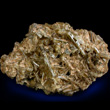
Another rock we learned about was sandstone. This is formed by an immense pressure on different layers of sand that will then come together and form a solid form. Since sand is required for this rock, it is mainly found in dry, sandy areas mainly deserts. It has some components of it such as felspar and quartz which are common to be found in the ground.
Another one is called slate and this is a metamorphic rock which means it was formed with a massive amount of pressure and low heat. This is popular and has many uses such as flooring, writing aids and decoration. Most of the common slate is grey with some varying from purple to green varaitaions.

Lastly, the rock we learned about was actually a mineral called zoisite. It is classified as a metamorphic or pegamitic mineral. It has a well known pink color called thulite. It was named in 1805 after an Austrian scientist Sigmund Baron Zois.


